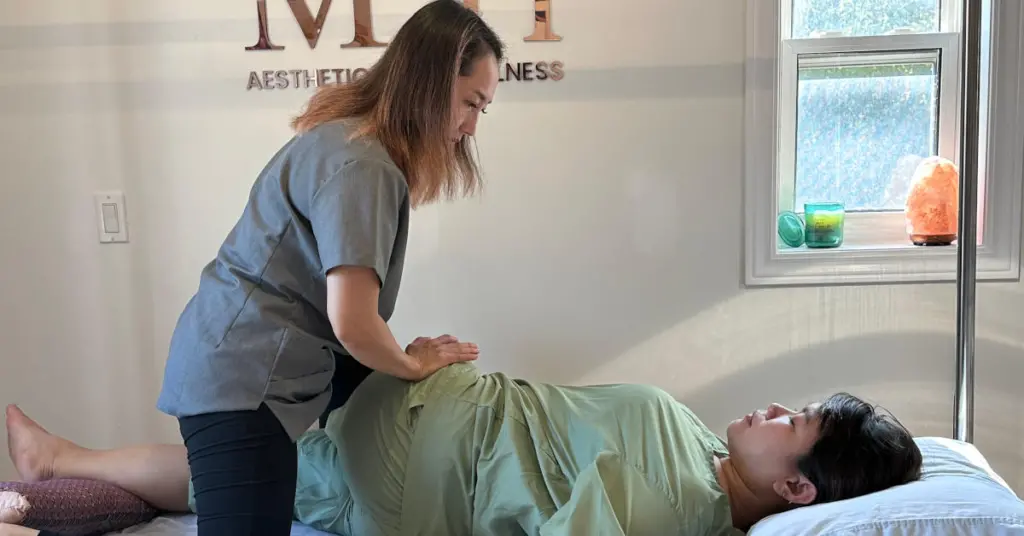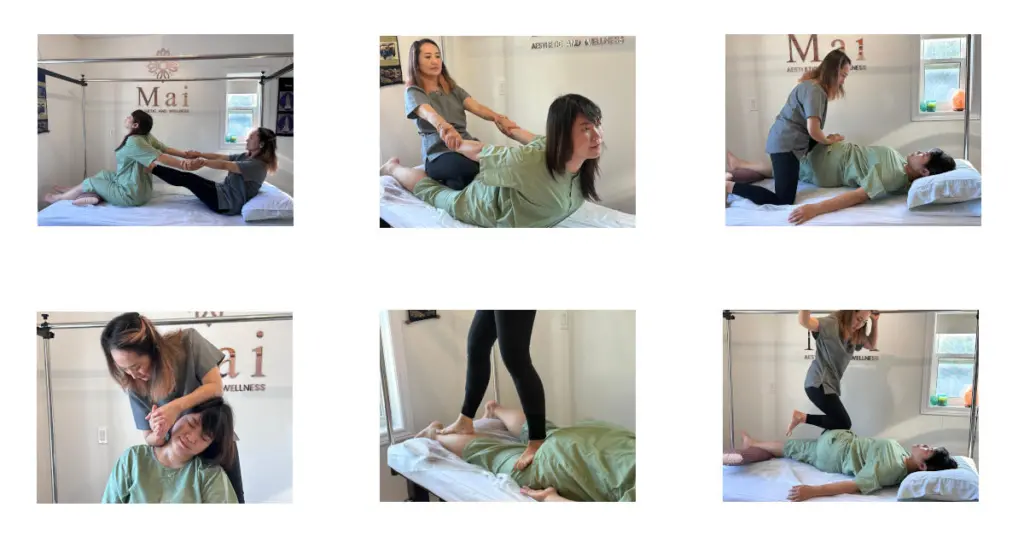Unlocking the Wonders of Thai Massage: A Holistic Path to Wellness
Explore the wonders of Thai Massage, a centuries-old healing tradition that traces its roots back to Thailand’s Sukhothai period. Thai Massage, also known as Thai Yoga Massage or Traditional Thai Massage, has stood the test of time and remains a revered practice in holistic well-being. In this article, we delve into the world of Thai Massage, its various types, benefits, and why it’s a unique experience.
What Is Thai Massage?
Thai Massage, also referred to as Thai Yoga Massage, is a therapeutic practice that incorporates a blend of acupressure and assisted yoga poses. This traditional Thai technique is administered with the recipient lying comfortably on a mat or floor mattress. The practitioner uses their hands, fingers, elbows, forearms, and sometimes even feet to compress, knead, and stretch the body. The practice aims to stimulate internal organs and enhance muscle flexibility.
Despite the name, Thai Massage shares its core principles with traditional Chinese medicine. Both systems emphasize the flow of energy through the body’s various channels. Thai Massage employs acupressure and yoga-like postures to improve energy flow and increase blood circulation.

Types of Thai Massage
Thai Massage serves various purposes and can be categorized into three primary types:
- Health-Oriented Massage: This type promotes overall relaxation and well-being and is suitable for individuals of all ages. It enhances blood circulation and leaves you feeling revitalized.
- Therapeutic Massage: Tailored for those seeking relief from specific discomforts like back pain, neck strain, muscle stiffness, and joint issues.
- Rehabilitative Massage: Designed for individuals recuperating from specific medical conditions such as paralysis and Parkinson’s disease. It supports the rehabilitation process.
In addition to these broad categories, Thai Massage may also be classified as “Nuad Sen” (Line Therapy) and “Nuad Ratchasamnak” (Royal Thai Massage) in some regions. These classifications correspond to different techniques tailored for specific purposes.
How Thai Massage Differs from Other Massages
Thai Massage stands out from other massage techniques in several ways:
- Unlike many massages that are administered on a table or massage bed, Thai Massage is performed on a comfortable floor mat.
- Recipients can remain clothed during the session, wearing loose attire that allows for easy movement.
- Traditional Thai Massage does not involve the use of oils or lotions.
- The practice incorporates a wide range of body movements, including yoga-like poses, stretching, and compressions, setting it apart from most other massage types.
This ancient and holistic approach to healing through Thai Massage offers a unique means of relaxation and well-being. It’s a time-tested tradition that has withstood the test of time and now receives global recognition and appreciation.
However, it’s essential to remember that Thai Massage might not be suitable for everyone, especially individuals with underlying health concerns. It’s advisable to consult with a healthcare professional before embarking on a Thai Massage journey.
For those eager to experience the wonders of Thai Massage, we offer this authentic and time-honored practice at Mai Thai Massage. Discover more about our services and experience the tranquility of Thai Massage here.

Benefits of Thai Massage
When it comes to relaxation and rejuvenation, the ancient art of Thai massage has gained immense popularity. This traditional practice offers a myriad of benefits, from soothing muscle pain to reducing stress and anxiety. However, like any form of massage, it’s essential to understand the potential risks and how to prepare for a Thai massage session. In this comprehensive guide, we will explore the benefits, potential risks, and preparations for your next Thai massage experience.
1. Relieving Muscle Pain
Thai massage effectively alleviates muscle pain, whether it’s in your neck, back, or other body parts.
2. Reducing Knee Inflammation
Studies have shown that Thai massage can help individuals with knee osteoarthritis by reducing pain and improving mobility when combined with walking exercises.
3. Easing Back Pain
For those struggling with chronic back pain, Thai massage can offer significant relief. It’s particularly effective for upper back pain.
4. Headache Relief
Regular Thai massage sessions have been shown to reduce stress-related headaches and migraines.
5. Enhancing Range of Motion
Thai massage involves stretches and compression that improve joint and muscle flexibility, reducing the risk of stiffness.
6. Stress Reduction
Despite the strong pressure applied during Thai massage, many people find it deeply relaxing. Brain scans even show a reduction in anxiety levels, especially when combined with adequate rest.
7. Increased Energy
By improving blood and lymphatic circulation, Thai massage ensures better oxygen and nutrient delivery to your body tissues, promoting cell growth.
8. Benefits for Stroke Patients
Regular Thai massage has been found to enhance the daily lives of stroke patients by reducing pain, improving sleep, and aiding in daily activities.
9. Relaxation
Thai massage promotes relaxation through gentle stretches and energy balance, reducing tension and enhancing overall well-being. Its holistic approach fosters deep serenity and rejuvenation.
It’s essential to remember that if you are suffering from severe muscle pain or any abnormal symptoms, consulting a healthcare professional before booking a Thai massage session is advisable.
Who Should Avoid Thai Massage?
Thai massage can impact your circulatory and muscular systems, which means it might not be suitable for individuals with certain health conditions, such as:
- Patients with Heart Conditions
- Individuals with High Blood Pressure
- Those with Spinal Issues
- Diabetic Patients
- Recent Surgery Patients
- Individuals with Open Wounds
- Cancer Patients
- Pregnant Women
- Those with Blood Disorders
- Individuals with Muscle Soreness Due to Fever
- Those with Acute Muscle Soreness
- People Exceeding Normal Body Weight
- First-Time Thai Massage Seekers

How to Prepare for Thai Massage
Getting ready for a Thai massage is a straightforward process, but it’s essential to take a few steps:
- Arrive Early: Arriving 10-30 minutes before your appointment allows you to complete paperwork, especially on your first visit.
- Share Health Information: Your massage therapist should know about your health history, as some medical conditions may affect the suitability of a Thai massage.
- Wear Loose Clothing: Wear loose-fitting clothing for comfort. Tight-fitting outfits can restrict your movement. In some cases, you may be provided with comfortable clothing for the session.
- Bring Comfort Items: The therapist will have a mat or table ready, along with pillows for your head.
Thai Massage Process
While the exact steps of a Thai massage may vary from one therapist to another, the general process typically involves:
- Changing into Loose Clothing: You may be asked to change into loose, comfortable clothing provided by the facility or wear your own loose attire.
- Preparation: The therapist prepares a mat or bed with cushions for your head.
- Stretching: The session begins with gentle stretching techniques that include pressing, compressing, and stretching the muscles.
- Use of Hands, Elbows, and Feet: The therapist uses their hands, elbows, forearms, and feet to apply various types of pressure and stretching.
- Personalization: Skilled Thai massage therapists adapt the session to your body’s condition and needs. Communication is key, so feel free to express your comfort preferences.
- Duration: Thai massage sessions can last anywhere from 30 minutes to 2 hours. The most common duration is 60-90 minutes.
- Post-Massage Feeling: After a Thai massage, it’s normal to feel relaxed and invigorated, with reduced muscle pain and improved flexibility.
Dangers that may Arise from Thai Massage
While Thai massage offers numerous benefits, there are also potential risks, including:
- Increased heart rate, which may not be suitable for individuals with heart conditions.
- Pain or discomfort if the therapist uses excessive pressure or the pressure isn’t suitable for your body.
- Post-massage muscle soreness, especially if you receive Thai massage for therapeutic purposes.
- Inflammation, which can worsen with a massage during this state.
- Excessive pressure or weight during the massage, leading to discomfort or pain.
- Discomfort for first-time Thai massage seekers or those who haven’t had a session in a while.
Should you Get Thai Massage Frequently?
The frequency and number of Thai massage sessions vary depending on individual preferences:
- Health-focused massages can be done once or twice a week.
- Pain relief massages may start at more frequent intervals and extend as pain diminishes.
However, it’s advisable not to get Thai massages on consecutive days to allow your muscles to rest. Consulting a physician or a Thai massage therapist for a suitable massage schedule is recommended.
Conclusion
The art of Thai massage has been a source of relaxation and healing for generations. Understanding its benefits, risks, and how to prepare for a session ensures that you can fully appreciate its therapeutic properties. By following our comprehensive guide, you’ll be well-prepared for your next Thai massage experience, and you can make the most of its potential benefits while staying safe.

